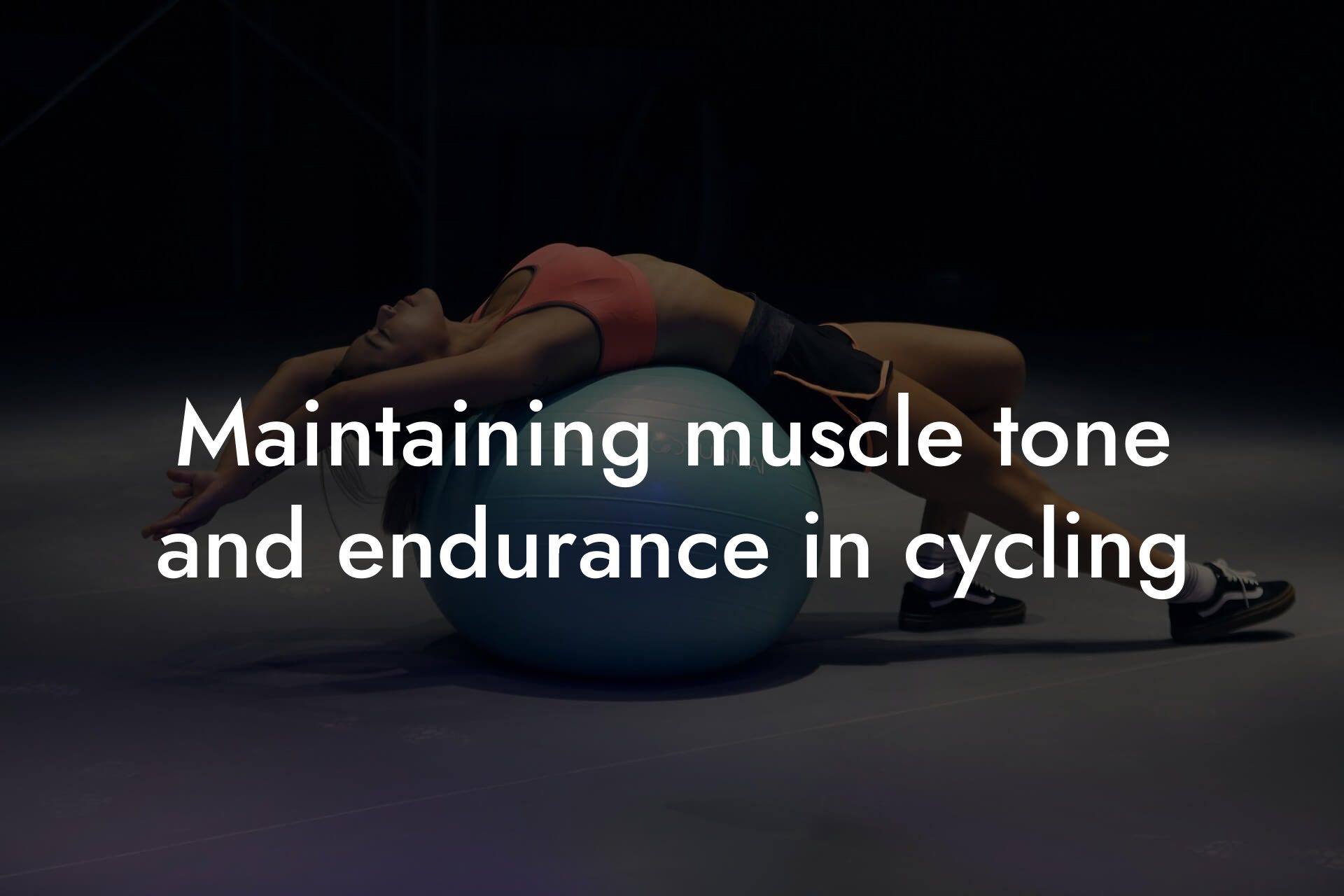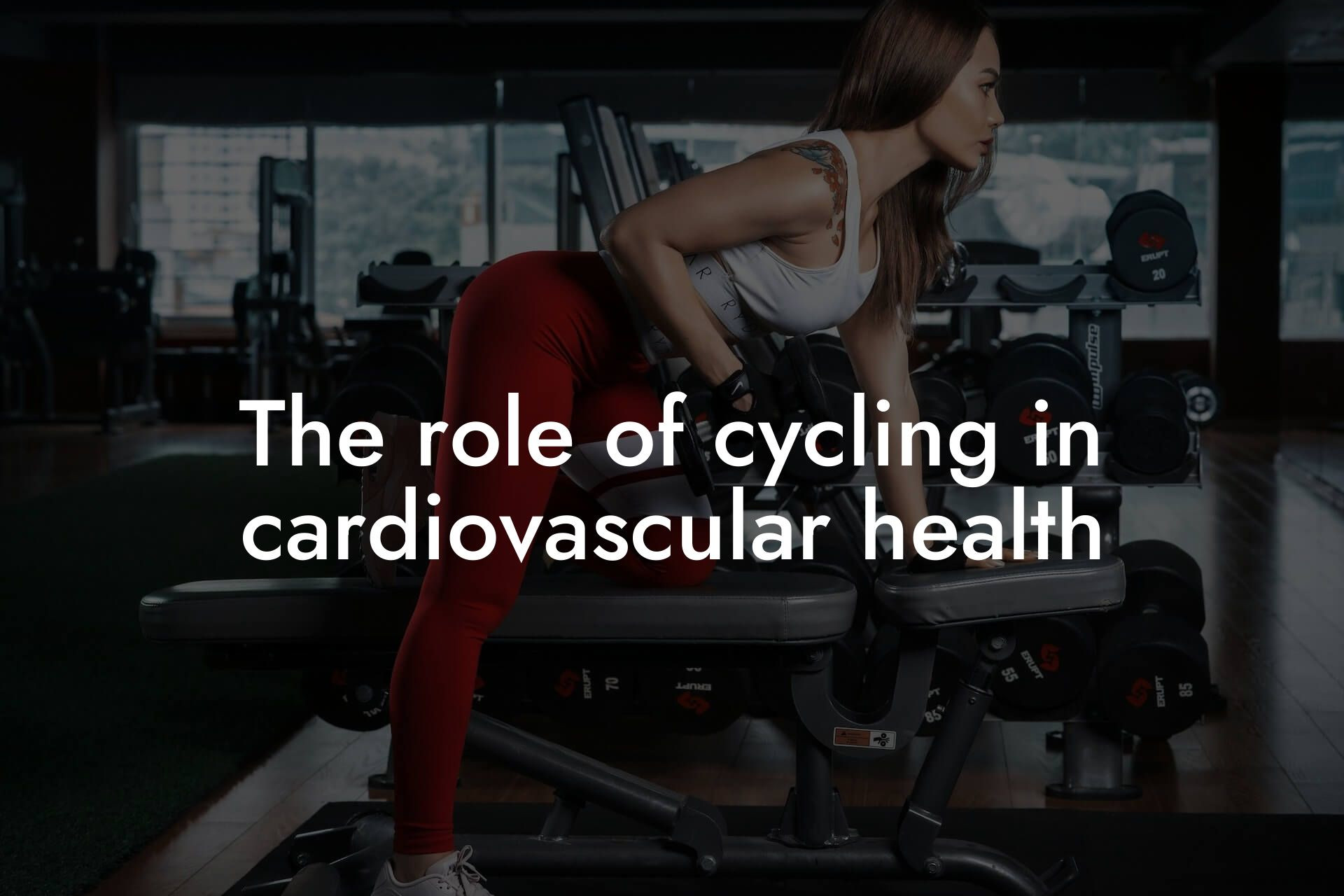As a high-earning professional, you understand the importance of maintaining a healthy physique to excel in your career. But did you know that your body composition also plays a significant role in your cycling performance? At Tano Performance Group, we're dedicated to helping you optimize your body composition to take your cycling to the next level. In this article, we'll delve into the intricacies of body composition and its impact on cycling performance.
Table of Contents
- What is Body Composition?
- The Importance of Lean Mass in Cycling
- The Role of Fat Mass in Cycling
- How Body Fat Percentage Affects Cycling Performance
- The Impact of Visceral Fat on Cycling Performance
- How Bone Density Affects Cycling Performance
- Optimizing Body Composition for Cycling Performance
- Frequently Asked Questions
What is Body Composition?
Body composition refers to the proportion of fat mass and lean mass in your body. Lean mass includes muscle, bone, and water, while fat mass encompasses both essential and storage fat. A healthy body composition is crucial for overall health and athletic performance. In cycling, a optimal body composition can significantly improve your power-to-weight ratio, endurance, and overall efficiency on the bike.
The Importance of Lean Mass in Cycling
Lean mass, particularly muscle mass, is essential for generating power and speed on the bike. The more muscle mass you have, the more force you can apply to the pedals, resulting in increased power output. Additionally, lean mass helps to improve your power-to-weight ratio, which is critical for climbing and accelerating. A higher lean mass percentage also enhances your body's ability to utilize fat as a fuel source, delaying the onset of fatigue.
The Role of Fat Mass in Cycling
Fat mass, on the other hand, can hinder your cycling performance. Excess fat mass increases your overall weight, reducing your power-to-weight ratio and making it more challenging to accelerate and climb. Furthermore, excess fat mass can lead to increased energy expenditure, as your body needs to work harder to move the extra weight. This can result in premature fatigue and decreased endurance.
How Body Fat Percentage Affects Cycling Performance
Body fat percentage is a critical factor in cycling performance. A higher body fat percentage can negatively impact your performance by increasing your overall weight, reducing your power-to-weight ratio, and decreasing your endurance. On the other hand, a low body fat percentage can improve your power-to-weight ratio, increase your endurance, and enhance your overall cycling performance. Ideally, male cyclists should aim for a body fat percentage between 6-13%, while female cyclists should aim for 16-23%.
The Impact of Visceral Fat on Cycling Performance
Visceral fat, also known as belly fat, is a type of fat that accumulates around your organs. Excess visceral fat can have a significant impact on your cycling performance by increasing inflammation, reducing insulin sensitivity, and decreasing your body's ability to utilize fat as a fuel source. This can lead to decreased endurance, premature fatigue, and a higher risk of chronic diseases.
How Bone Density Affects Cycling Performance
Bone density is another critical aspect of body composition that affects cycling performance. Low bone density can increase your risk of fractures and osteoporosis, particularly in older cyclists. In addition, low bone density can lead to decreased power output and endurance, as your body needs to work harder to support your skeletal system. Maintaining optimal bone density through a combination of strength training, calcium supplementation, and vitamin D is essential for cyclists.
Optimizing Body Composition for Cycling Performance
So, how can you optimize your body composition for cycling performance? The key is to focus on a balanced diet that includes plenty of protein, complex carbohydrates, and healthy fats. Additionally, incorporating strength training and high-intensity interval training (HIIT) into your workout routine can help improve your lean mass percentage and reduce your body fat percentage. Finally, getting regular body composition assessments using a DEXA machine can help you track your progress and make data-driven decisions to optimize your body composition.
In conclusion, body composition plays a critical role in cycling performance. By understanding the importance of lean mass, fat mass, body fat percentage, visceral fat, and bone density, you can take steps to optimize your body composition and improve your cycling performance. At Tano Performance Group, we're committed to helping high-earning professionals like you achieve their fitness goals through our comprehensive body composition assessments and personalized coaching. Take the first step towards optimizing your body composition and unlocking your full cycling potential today!
Frequently Asked Questions
What is body composition, and how does it affect cycling performance?
Body composition refers to the proportion of fat and lean mass in the body. In cycling, a higher percentage of lean mass and a lower percentage of body fat can improve performance by increasing power-to-weight ratio, reducing energy expenditure, and enhancing endurance. At Tano Performance Group, we understand the importance of optimal body composition for high-achieving professionals like yourself.
How does body fat percentage impact cycling performance?
Excess body fat can hinder cycling performance by increasing energy expenditure, reducing power output, and decreasing endurance. Even a small reduction in body fat percentage can significantly improve cycling performance. Our experts at Tano Performance Group can guide you on how to achieve an optimal body fat percentage for enhanced cycling performance.
What is the ideal body fat percentage for cyclists?
The ideal body fat percentage for cyclists varies depending on the individual's goals, age, and sex. Generally, professional cyclists aim to maintain a body fat percentage between 6-12% for men and 16-23% for women. However, for recreational cyclists, a body fat percentage between 10-18% for men and 18-25% for women is considered acceptable. Our team at Tano Performance Group can help you determine your ideal body fat percentage.
How does muscle mass affect cycling performance?
Muscle mass plays a crucial role in cycling performance, as it determines the amount of power and force that can be generated. Cyclists with higher muscle mass tend to have a higher power-to-weight ratio, which enables them to accelerate faster and maintain speed over longer distances. At Tano Performance Group, we can help you develop a training plan to optimize your muscle mass for improved cycling performance.
What is the relationship between bone density and cycling performance?
Bone density is essential for cyclists, as it affects the risk of fractures and osteoporosis. Cyclists with higher bone density tend to have a lower risk of fractures and osteoporosis, which can improve overall performance and reduce the risk of injury. Our experts at Tano Performance Group can provide guidance on how to maintain optimal bone density for cycling.
How does body composition affect power output in cycling?
Body composition has a significant impact on power output in cycling. Cyclists with a higher percentage of lean mass and a lower percentage of body fat tend to have a higher power-to-weight ratio, which enables them to generate more power and accelerate faster. At Tano Performance Group, we can help you optimize your body composition for improved power output.
What is the impact of body composition on endurance in cycling?
Body composition plays a critical role in endurance cycling, as it affects the body's ability to store and utilize energy. Cyclists with a higher percentage of lean mass and a lower percentage of body fat tend to have improved endurance, as they can store more energy in their muscles and utilize it more efficiently. Our team at Tano Performance Group can help you develop a training plan to optimize your body composition for improved endurance.
How does body composition affect recovery in cycling?
Body composition has a significant impact on recovery in cycling, as it affects the body's ability to repair and adapt to physical stress. Cyclists with a higher percentage of lean mass and a lower percentage of body fat tend to recover faster and more efficiently, as they have a higher concentration of antioxidants and anti-inflammatory compounds in their muscles. At Tano Performance Group, we can provide guidance on how to optimize your body composition for improved recovery.
What is the relationship between body composition and injury risk in cycling?
Body composition has a significant impact on injury risk in cycling, as it affects the body's ability to absorb and distribute impact forces. Cyclists with a higher percentage of lean mass and a lower percentage of body fat tend to have a lower risk of injury, as they have a higher concentration of muscle mass to absorb and distribute impact forces. Our experts at Tano Performance Group can help you develop a training plan to optimize your body composition for reduced injury risk.
How does body composition affect mental performance in cycling?
Body composition has a significant impact on mental performance in cycling, as it affects the body's ability to regulate stress and anxiety. Cyclists with a higher percentage of lean mass and a lower percentage of body fat tend to have improved mental performance, as they have a higher concentration of neurotransmitters and hormones that regulate mood and motivation. At Tano Performance Group, we can provide guidance on how to optimize your body composition for improved mental performance.
What is the impact of body composition on cycling economy?
Body composition has a significant impact on cycling economy, as it affects the body's ability to generate power efficiently. Cyclists with a higher percentage of lean mass and a lower percentage of body fat tend to have improved cycling economy, as they can generate power more efficiently and conserve energy. Our team at Tano Performance Group can help you develop a training plan to optimize your body composition for improved cycling economy.
How does body composition affect climbing performance in cycling?
Body composition has a significant impact on climbing performance in cycling, as it affects the body's ability to generate power and maintain speed on inclines. Cyclists with a higher percentage of lean mass and a lower percentage of body fat tend to have improved climbing performance, as they can generate more power and maintain speed more efficiently. At Tano Performance Group, we can provide guidance on how to optimize your body composition for improved climbing performance.
What is the relationship between body composition and time trialing performance in cycling?
Body composition has a significant impact on time trialing performance in cycling, as it affects the body's ability to generate power and maintain speed over a prolonged period. Cyclists with a higher percentage of lean mass and a lower percentage of body fat tend to have improved time trialing performance, as they can generate more power and maintain speed more efficiently. Our experts at Tano Performance Group can help you develop a training plan to optimize your body composition for improved time trialing performance.
How does body composition affect sprinting performance in cycling?
Body composition has a significant impact on sprinting performance in cycling, as it affects the body's ability to generate explosive power. Cyclists with a higher percentage of lean mass and a lower percentage of body fat tend to have improved sprinting performance, as they can generate more explosive power and accelerate faster. At Tano Performance Group, we can provide guidance on how to optimize your body composition for improved sprinting performance.
What is the impact of body composition on overall cycling performance?
Body composition has a profound impact on overall cycling performance, as it affects power output, endurance, recovery, and mental performance. Cyclists with an optimal body composition tend to have improved overall performance, as they can generate more power, maintain speed over longer distances, and recover faster. Our team at Tano Performance Group can help you develop a comprehensive training plan to optimize your body composition for improved overall cycling performance.
How can I measure my body composition for cycling?
There are several methods to measure body composition for cycling, including dual-energy X-ray absorptiometry (DXA), skinfold measurements, and bioelectrical impedance analysis (BIA). At Tano Performance Group, we recommend using DXA or skinfold measurements, as they provide a more accurate assessment of body composition. Our experts can guide you on how to measure your body composition and develop a personalized training plan to optimize your results.
What are the benefits of optimizing body composition for cycling?
Optimizing body composition for cycling can have numerous benefits, including improved power output, enhanced endurance, faster recovery, and reduced injury risk. Additionally, optimal body composition can improve mental performance, reduce fatigue, and enhance overall cycling performance. At Tano Performance Group, we can help you achieve these benefits and take your cycling performance to the next level.
How can I optimize my body composition for cycling?
Optimizing body composition for cycling requires a comprehensive approach that includes a balanced diet, targeted training, and proper recovery strategies. At Tano Performance Group, we can provide personalized guidance on how to optimize your body composition, including developing a customized training plan, providing nutrition advice, and offering recovery strategies tailored to your specific needs.
What are the common mistakes cyclists make when trying to optimize their body composition?
Common mistakes cyclists make when trying to optimize their body composition include crash dieting, overtraining, and neglecting proper recovery strategies. At Tano Performance Group, we can help you avoid these mistakes and develop a sustainable approach to optimizing your body composition for improved cycling performance.
How long does it take to see improvements in cycling performance after optimizing body composition?
The time it takes to see improvements in cycling performance after optimizing body composition varies depending on individual factors, such as starting body composition, training experience, and consistency of training. However, with a comprehensive approach to optimizing body composition, cyclists can typically expect to see improvements in performance within 6-12 weeks. Our team at Tano Performance Group can provide guidance on how to track your progress and make adjustments to your training plan as needed.
Can I optimize my body composition for cycling on my own, or do I need professional guidance?
While it's possible to optimize body composition for cycling on your own, working with a professional coach or trainer can provide personalized guidance and ensure you're making progress towards your goals. At Tano Performance Group, our experts can provide customized coaching, training plans, and nutrition advice to help you optimize your body composition and take your cycling performance to the next level.
What are the benefits of working with a professional coach or trainer to optimize body composition for cycling?
Working with a professional coach or trainer to optimize body composition for cycling can provide numerous benefits, including personalized guidance, customized training plans, and expert nutrition advice. Additionally, a professional coach or trainer can help you stay motivated, track your progress, and make adjustments to your training plan as needed. At Tano Performance Group, our experts can provide comprehensive support to help you achieve your cycling goals.
Here are some related articles you might love...
- Strength training tips to complement your cycling routine
- Maintaining muscle tone and endurance in cycling
- The role of cycling in cardiovascular health
- How DEXA scans can benefit cycling enthusiasts
- Nutrition strategies for sustained energy during spin classes
- Balancing strength and endurance in spin classes
- Bone density and its role in cycling performance
- Recovery techniques for cyclists after intense sessions
Zak Faulkner
Zak Faulkner is a leading authority in the realm of physical health and body composition analysis, with over 15 years of experience helping professionals optimise their fitness and well-being. As one the experts behind Tano Performance Group, Zak has dedicated his career to providing in-depth, science-backed insights that empower clients to elevate their physical performance and overall health.
With extensive knowledge of DEXA technology, Zak specializes in delivering comprehensive body assessments that offer precise data on body fat, muscle mass, bone density, and overall physique. His expertise enables individuals to make informed decisions and achieve their fitness goals with accuracy and confidence. Zak’s approach is rooted in a deep understanding of human physiology, combined with a passion for helping clients unlock their full potential through personalised strategies.
Over the years, Zak has earned a reputation for his commitment to excellence, precision, and client-focused service. His guidance is trusted by top professionals who demand the best when it comes to their health. Whether advising on fitness programs, nutritional strategies, or long-term wellness plans, Zak Faulkner’s insights are a valuable resource for anyone serious about taking their health and fitness to the next level.
At Tano Performance Group, Zak continues to lead our Content Team revolutionising how professionals approach their physical health, offering unparalleled expertise that drives real results.




